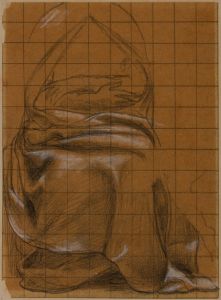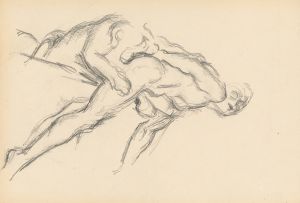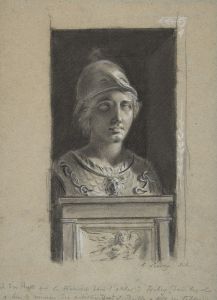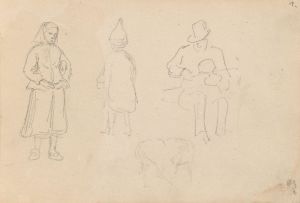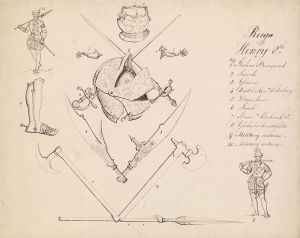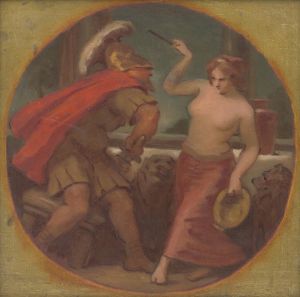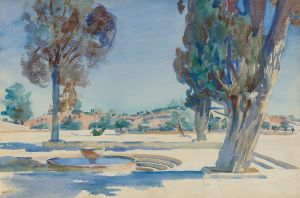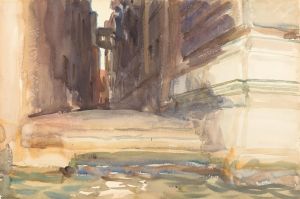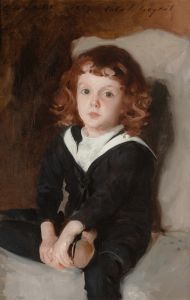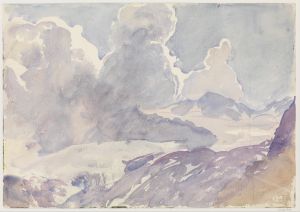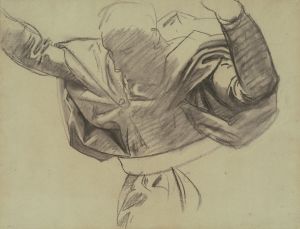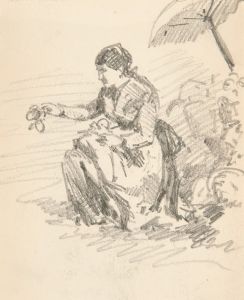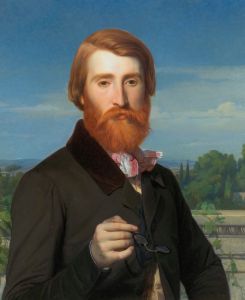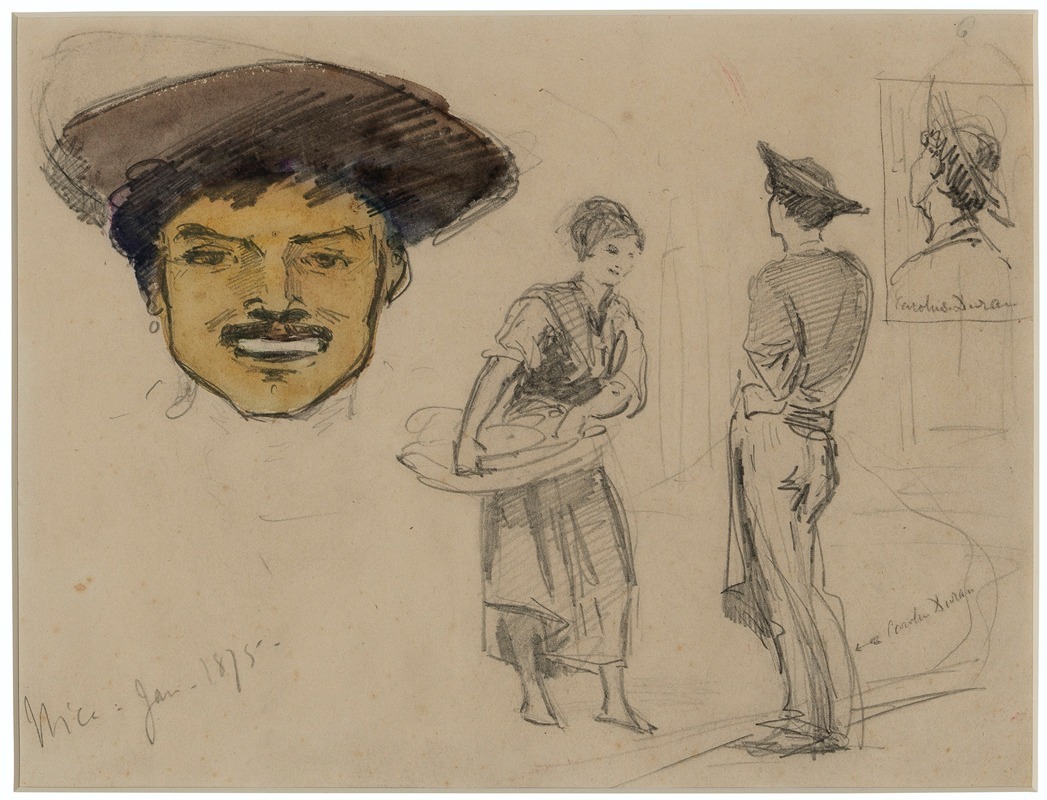
Figure Studies, Nice and Sketches of Carolus-Duran
A hand-painted replica of John Singer Sargent’s masterpiece Figure Studies, Nice and Sketches of Carolus-Duran, meticulously crafted by professional artists to capture the true essence of the original. Each piece is created with museum-quality canvas and rare mineral pigments, carefully painted by experienced artists with delicate brushstrokes and rich, layered colors to perfectly recreate the texture of the original artwork. Unlike machine-printed reproductions, this hand-painted version brings the painting to life, infused with the artist’s emotions and skill in every stroke. Whether for personal collection or home decoration, it instantly elevates the artistic atmosphere of any space.
John Singer Sargent, an American expatriate artist renowned for his portraits, created "Figure Studies, Nice and Sketches of Carolus-Duran" during his formative years. Sargent, born in 1856, was a leading portrait painter of his generation, known for his evocation of Edwardian-era luxury. His works are characterized by their technical brilliance and the ability to capture the personality and essence of his subjects.
"Figure Studies, Nice and Sketches of Carolus-Duran" is a testament to Sargent's early development as an artist. This piece is particularly significant as it reflects his time studying under the French painter Carolus-Duran, who was instrumental in shaping Sargent's approach to painting. Carolus-Duran was known for his innovative techniques and emphasis on capturing the naturalism of his subjects, which greatly influenced Sargent's style.
The sketches were created during Sargent's stay in Nice, a period when he was honing his skills and experimenting with different techniques. Nice, with its vibrant light and picturesque landscapes, provided an ideal setting for Sargent to explore the interplay of light and shadow, a characteristic that would become a hallmark of his later works. The sketches from this period often include studies of figures, capturing the fluidity and grace of human movement, which Sargent would later master in his portraiture.
Sargent's relationship with Carolus-Duran was pivotal. Carolus-Duran's atelier was a hub for young artists in Paris, and his teaching emphasized direct painting techniques, often working from life rather than preliminary sketches. This method encouraged spontaneity and a more dynamic representation of subjects, which is evident in Sargent's sketches. The influence of Carolus-Duran is apparent in Sargent's confident brushwork and his ability to convey the vitality of his subjects with minimal, yet expressive, strokes.
The sketches also reveal Sargent's keen observational skills and his dedication to mastering the human form. His studies often focused on the subtleties of posture and gesture, elements that would later define his portraits. These early works are crucial in understanding Sargent's artistic evolution and his transition from a student to a master painter.
While "Figure Studies, Nice and Sketches of Carolus-Duran" may not be as widely recognized as some of Sargent's later masterpieces, such as "Portrait of Madame X" or "Carnation, Lily, Lily, Rose," they provide valuable insight into his developmental years and the foundational techniques that he would carry throughout his career. These sketches are preserved as part of Sargent's broader body of work, which continues to be studied and admired for its contribution to the art of portraiture.
In summary, "Figure Studies, Nice and Sketches of Carolus-Duran" are significant for their reflection of John Singer Sargent's early artistic influences and his burgeoning talent. They highlight the impact of Carolus-Duran's mentorship and the environment of Nice in shaping Sargent's approach to capturing the human form with vitality and precision.





